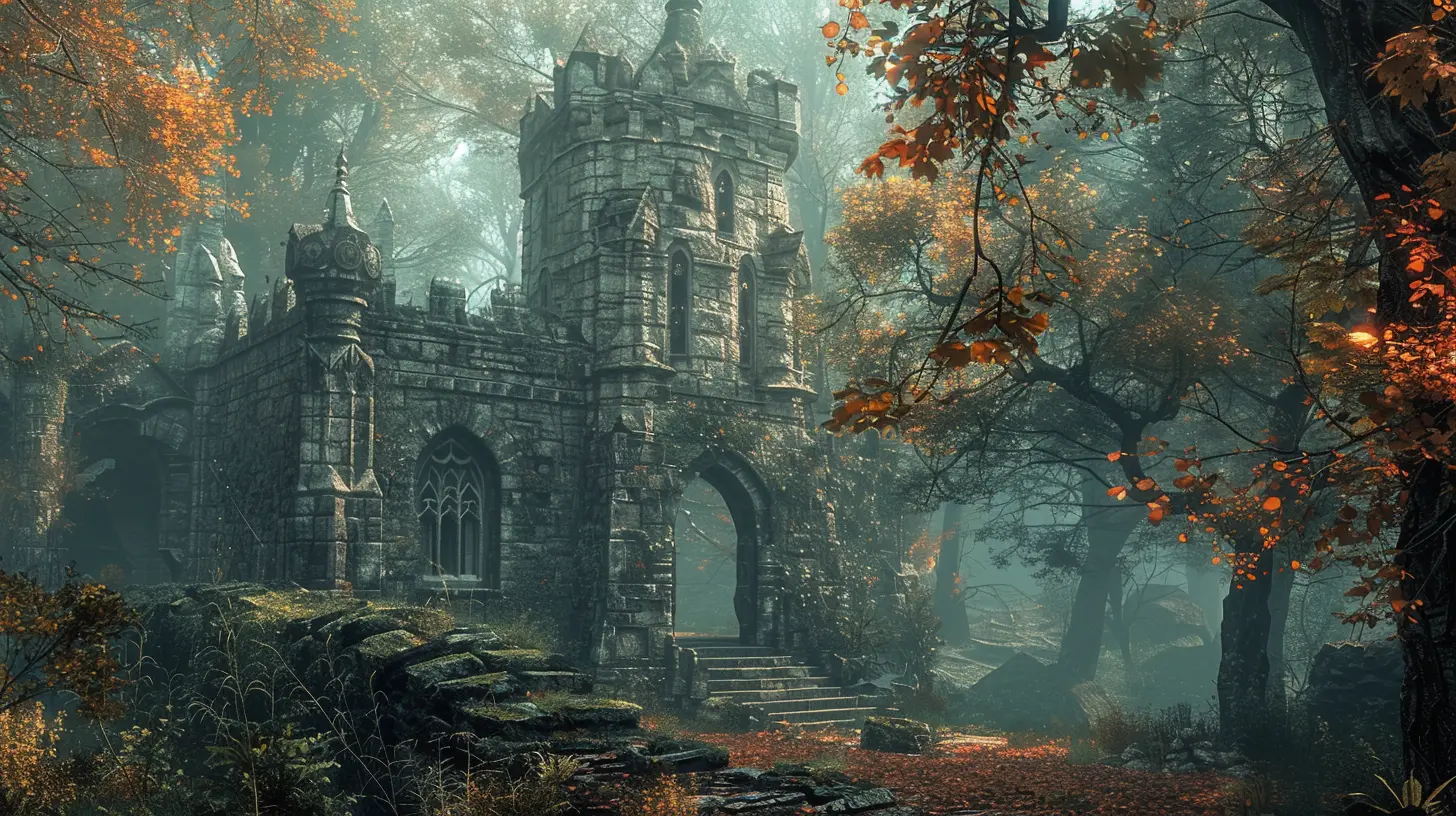When the Setting Becomes a Character in the Story
17 September 2025
Ever played a game where the world feels so alive, so full of personality, that it feels like it’s watching you back? That spine-tingling feeling you get when a location isn’t just a backdrop, but an active player in the story? Yeah, that’s what we’re talking about today — when the setting becomes a character in the story.
It’s not just about beautiful scenery or a well-drawn map. We’re diving deeper than that. Some games go beyond simply placing events in a location. They breathe life into their worlds. They make settings feel like entities — complete with moods, arcs, histories, and sometimes secrets that change the way you play.
Let’s unpack how this magic happens, why it matters, and which games have nailed this concept like pros.
What Does It Mean for a Setting to Be a Character?
Alright, let’s not get overly philosophical here.When we say a “setting becomes a character,” we’re talking about spaces that have presence. Not just in the visual sense, but emotionally and narratively. These are the places that feel alive — where the environment contributes to the story in the same way a sidekick or a villain does.
It’s like when you walk into a haunted mansion in a horror game and instantly feel the weight of what’s happened there. Or when a cyberpunk city pulses with neon and grime, telling stories through its alleys, signs, and broken machinery. The setting isn’t passive — it’s active, with personality and impact.
Why Does This Matter in Games?
A strong setting can elevate a game from good to unforgettable. Here's why:- Emotional engagement: A rich world pulls you in. It makes you care because it feels real.
- Atmospheric storytelling: Details in the environment add layers to the narrative without heavy dialogue or exposition.
- Immersion: The more a setting reacts to and interacts with your choices, the deeper the experience.
And let’s be real — game devs know that world-building is half the battle when it comes to keeping players immersed for the long haul.
The Anatomy of a Living Setting
So what actually goes into crafting a setting that feels like a character? It’s not just pretty visuals (though those help). It’s about intention, mood, and interaction.1. History and Lore
Every character has a backstory, right? Same goes for the world itself.Take The Elder Scrolls V: Skyrim. Every ruin, every village, every mountain has lore behind it. There’s a reason for everything, and the world feels old and lived in. The more you explore, the more you uncover layers of forgotten history — which makes the world more than a canvas. It becomes a living novel.
2. Mood and Tone
You can feel your environment just as much as you can see it.Think Bloodborne. That game is dripping with gothic horror. The setting’s oppressive, eerie, and unsettling — and that mood never lets up. The city of Yharnam feels sick and deteriorating, mirroring the themes of madness and decay throughout the game.
Mood is what helps settings speak — even when no one's talking.
3. Environmental Storytelling
This is about letting the scenery tell the story — without a cutscene in sight.In The Last of Us, abandoned homes, crumbling cities, and overgrown highways speak volumes. A child’s drawing left in a ruin? That’s a story. Skeletons holding hands in a shelter? That’s a story. These visual cues turn space into narrative.
4. Interactivity and Change
Characters evolve, right? So should dynamic settings.Red Dead Redemption 2 does this beautifully. The world feels different depending on the weather, the time of day, your actions, and the storyline’s progression. The American frontier isn't just a setting — it's almost like a reflection of Arthur Morgan’s journey.
Games That Absolutely Nailed It
Alright, enough theory. Let’s dive into some games that crushed this idea. These aren’t just stunning landscapes — they’re characters you remember long after you log off.1. Rapture – BioShock
If you’ve played BioShock, you’ll remember Rapture. That underwater city isn’t just the game's setting — it is the game. Built on Objectivist ideals and sunk into chaos, Rapture oozes intelligence, madness, and decay. Every flickering light and crumbling statue says “this place had dreams... until it didn’t.”Rapture feels like it’s judging you. Watching you. And it’s terrifyingly lonely, yet full of stories.
2. Hyrule – The Legend of Zelda: Breath of the Wild
The thing about Hyrule in BOTW is how free it is. It’s massive, yes — but also deeply responsive. The weather, ecosystems, and cultures make this Hyrule feel like it has a soul. It’s not just there to be explored. It evolves with you. It tempts you. It wonders what kind of hero you’ll become.3. The Island – Myst
Minimalist but powerful, Myst creates a setting that feels like it's whispering secrets.Everything is atmospheric. Everything matters. The island has no NPCs blabbering on; it relies on its puzzles and surreal spaces to tell its story. The loneliness of the island actually becomes part of its character.
4. The Normandy – Mass Effect
Okay, this might sound weird, but hear me out — the Normandy isn’t just a spaceship. It’s your home. It's where your team comes together, where your decisions echo, and where your relationships grow. Its halls change depending on your journey. Like a character, it grows with you — and saying goodbye to it? That’s heartbreak.5. Silent Hill – Silent Hill 2
This might be one of the most famous examples. Silent Hill isn’t just a town; it’s a mirror of your guilt, fears, and trauma. It knows you. It freakin’ adapts its horrors based on who you are.That kind of psychological tie between character and world is what makes Silent Hill unforgettable. It’s alive — and it’s angry.
How Game Devs Pull It Off
Designing a setting that feels like a character isn’t magic. It’s a mix of smart storytelling, environmental design, and a whole lot of attention to detail.Here are a few tricks devs often use:
Visual Cues
Graffiti on a wall. A bloodstained cot. Overgrown ivy reclaiming a once-thriving city. Visuals set the tone and hint at past events without a single word.Audio Design
Ever noticed how sound sells the vibe? Hollow wind in a cave, distant thunder, a soft hum of neon lights — all of this contributes to how a place feels. Without good sound, the setting risks feeling flat.Player Choices and World Response
When the world responds to what you do — like in Fable or The Witcher 3 — it adds weight to your decisions. The setting doesn’t just sit there; it reacts. Like a real character would.Layers of Exploration
The best games encourage you to dig deeper. That could mean secret areas, hidden lore, alternate paths, or environmental puzzles. The more you engage with the world, the more it reveals.Why Players Crave This
Let’s face it — we don’t just play games for the high scores or the gear. We play to feel something. To be transported.A well-developed world becomes a place you remember like you spent real time there. You might forget a side quest or a battle. But that eerie feeling of walking through a storm in Death Stranding? Or standing on a peak in Skyrim, staring down at the plains below?
Those are the memories that stick.
Because in those moments, the world isn’t just pixels and code. It’s a character, and it’s part of your story.
Final Thoughts
When a setting becomes a character in the story, it transcends its role. It’s not just scenery anymore — it’s meaning. It’s emotion. And for a lot of players? It’s the reason they keep coming back.So next time you fire up a game, pay attention to where you are. Listen to it. Look at it. Feel it. You might just find that the world is trying to tell you something.
Not every setting can be a character. But when it is?
That’s when a game goes from memorable to legendary.
all images in this post were generated using AI tools
Category:
Game StorylinesAuthor:

Tayla Warner
Discussion
rate this article
1 comments
Weston McIntyre
This article beautifully highlights how settings can enhance storytelling. When a location has its own personality and influences characters, it transcends mere backdrop. I'm particularly drawn to examples where the environment shapes the narrative, making it an essential character within the story.
September 17, 2025 at 2:50 AM

Tayla Warner
Thank you for your insightful comment! I completely agree—when a setting weaves into the narrative, it enriches the characters and brings the story to life.


